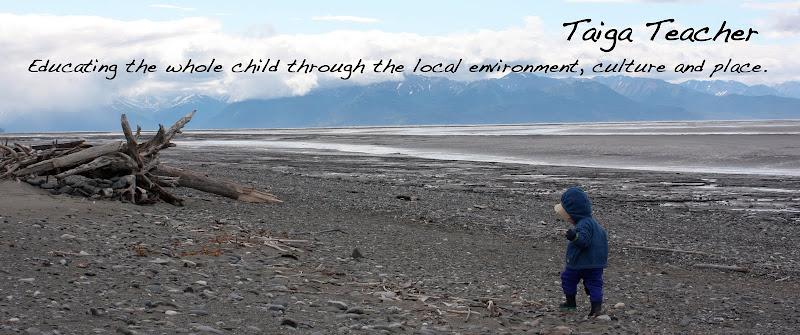My
family and I have been thoroughly enjoying our extended stay in Kodiak
this summer! We've explored mountains, beaches, rivers and the ocean. I was worried about not being able to go berry picking this year in my favorite spot back home outside of Anchorage. Kodiak has proved to be even better! I may not be able to move back!
My favorite part of
the year is always berry picking season! It's in my blood, literally.
My father is half Finnish, making me a quarter and the Finns are avid
berry pickers as their climate is very similar to Alaska. Even those who
immigrated to the US, kept up this tradition. My great grandmother
owned a blueberry farm in southern New Hampshire. My grandfather made
sure to have a bounty of blueberry bushes on his own property. My dad
grew up picking berries at my Great Grandma Liimatainen's farm.
Alaska
is a land where people take the utmost pride in their ability to
subsist of the land. So be careful when you ask someone where their
favorite blueberry spot is... they may lead you astray. Like favorite
hunting grounds and fishing holes, we guard our berry picking spots with
great secrecy, only to be shared with family or close friends.
 |
| My little forager. |
This year was a new first for me in my long line of years picking the wild fruit...
Salmonberries! What is a salmonberry
you might ask. Well it is a beefed up close relative to the raspberry.
The leaves and stems are very reminiscent of the raspberry, but the
flower is big and bright pink. You can take the flower off the stem and
suck the sweet fragrant nectar from it, much like you would with
honeysuckle. The berries themselves are again much like the raspberry,
with the same fruit structure, but much larger. They change in color
from green, to orange to a deep blood red when ripe and are called salmonberries
because they look strikingly like salmon roe (eggs). Not quite as sweet
as their cousins, they make for the best pie I've ever had! They are
great for making jam, sauces, wine and ice cream too.
Due
to the cold, very snowy winter, they were a little later in their
ripening this year. While my family was on one of our almost nightly
walks on the docks, checking out the fishing boats and more importantly
the new sailboats in from all over the world, I overheard a funny
conversation between two burly fishermen getting their nets ready for
their next run. They were cursing up a storm, when one stops and says
"Hey what's up with the salmonberries this year? But this f*&%$ing time last year I was f#%^@ing
making jam!" It seemed so comical to me that such a rough and tumble
guy would be swearing and talking about one of the most historically
domestic tasks. Even cussing, giant, weathered men have a soft side.
While the fisherman like salmonberries, so too do many of the
birds. It is amusing to watch them after they've gorged themselves on
the fruit, then try to take off and fly, markedly larger than when they
had first landed. Flying much lower to the ground they take a while to
gain altitude.
While at storytime
at the local library, the children's librarian read a great story about
berries, harnessing the many connections and experiences the children
have with them this time of year. The craft to go along with the story
was to make a berry bucket, complete with bells, so you can easily
locate your child and in Kodiak hopefully warn the bears of your
presence, as they love berries too. If only
Sal in Blueberries for Sal had a berry bucket with bells... ah but then there wouldn't have been a good story to tell.
Here are the materials needed for the bucket:
- a yogurt container with lid
- hole puncher
- yarn
- pipecleaners
- bells
- stickers to decorate
Here's a link to my berry season post last year with a variety of lesson
ideas, activities and books that focus on berry picking:
Blueberry Buddies and Lessons from the Land.









